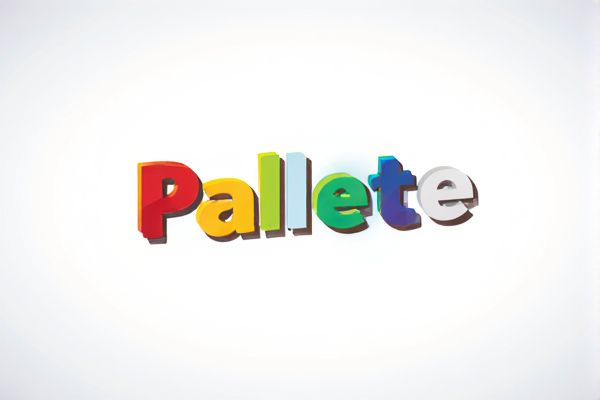
Discover unique and vibrant color palettes generated from your chosen name, perfect for inspiring creative projects and designs. This intuitive tool transforms names into harmonious color combinations, making it easy to find the ideal palette for branding, artwork, or mood boards. Explore endless possibilities and bring your vision to life with personalized color inspiration.
Online tool for random color palette generator from name
Explore our random color palette generator designed to create unique color combinations from any name or list you provide. Simply enter your list and click the button to receive a randomized palette instantly. This tool makes it easy to generate fresh color values for your projects with minimal effort.Data Source
Single Result
Multiple Results
Understanding Random Color Palette Generators
Random color palette generators create diverse color schemes by converting input like names into unique color codes using algorithms that map alphanumeric characters to color values. These tools enhance design creativity by providing unexpected, personalized palettes based on semantic or lexical features of the input text. Understanding the underlying hash functions and color space conversions helps optimize palette generation for various digital and artistic applications.
The Science Behind Name-Based Color Generation
The science behind name-based color generation involves converting textual input into numeric values using algorithms like hash functions, which then map these values to specific color spaces such as RGB or HSL. This process ensures consistency by generating unique, reproducible color palettes derived directly from the character patterns and sequences within a name. Advanced techniques incorporate linguistic patterns and letter frequency analysis to enhance the semantic relevance and aesthetic harmony of the resulting color combinations.
Why Use Names to Generate Color Palettes
Using names to generate random color palettes leverages the psychological and emotional associations tied to specific words, enhancing user engagement and memorability. This method creates personalized, meaningful color combinations that resonate more deeply than arbitrary selections. Incorporating names ensures unique, contextually relevant palettes ideal for branding, design inspiration, and user interface customization.
Unique Applications for Name-Derived Color Schemes
Random color palette generators that create schemes based on names offer unique applications in branding and personalized design, allowing companies to evoke specific emotions tied to individual or product identities. These generators use algorithmic analysis of name characters to translate linguistic nuances into harmonious color combinations, enhancing user engagement through tailored visual experiences. Designers leverage this approach for creating memorable logos, websites, and marketing materials that resonate on a personal and emotional level.
Algorithms for Mapping Names to Colors
Algorithms for mapping names to colors employ hash functions that convert textual input into consistent numeric values, which are then transformed into specific color codes such as RGB or HEX. Techniques like cosine similarity and color space mapping optimize palette diversity and aesthetic harmony by analyzing character patterns and linguistic features within names. These algorithms ensure reproducible, unique color assignments enhancing personalization in design systems and data visualization.
Ensuring Consistency in Name-Based Palettes
A random color palette generator from a name ensures consistency by using algorithms that convert the input text into fixed color values, enabling reproducible palettes for branding or design purposes. By mapping character codes or name properties to specific hue, saturation, and brightness ranges, the tool achieves a unique and stable color arrangement linked directly to the name. This consistency supports cohesive visual identities across multiple platforms, streamlining the creative process.
Enhancing User Experience with Personalized Colors
A random color palette generator that bases choices on a user's name delivers a unique, personalized experience by creating color schemes that resonate on an individual level. This approach utilizes semantic analysis and name-driven algorithms to produce harmonious colors, enhancing aesthetic appeal and emotional connection. Personalized color palettes improve engagement in web design, branding, and creative projects by reflecting identity and boosting user satisfaction.
Popular Tools for Generating Color Palettes from Names
Popular tools for generating color palettes from names include Coolors, Adobe Color, and Paletton, each utilizing algorithms to transform textual input into harmonious color schemes. Coolors offers a user-friendly interface for creating palettes based on name inspiration, Adobe Color integrates AI-driven suggestions for names and color harmony, and Paletton provides customizable options to adjust palettes generated from name inputs. These platforms leverage semantic analysis and color theory to produce visually appealing and unique color combinations tailored to specific name-based queries.
Challenges in Random Name-Based Color Generation
Random color palette generators based on names face challenges in maintaining color consistency and relevance due to the subjective nature of name-to-color mapping. Variations in cultural perceptions and linguistic nuances complicate the algorithm's ability to produce universally appealing palettes. Ensuring vibrant yet harmonious colors while avoiding repetitive or dull results requires advanced semantic analysis and adaptive design strategies.
Future Trends in Personalized Digital Color Creation
Future trends in personalized digital color creation emphasize AI-powered random color palette generators that create unique, name-based color schemes tailored to individual identities. Leveraging machine learning algorithms, these tools analyze linguistic and cultural nuances embedded in names to generate harmonious, contextually relevant colors with high user engagement. Integration with augmented reality and real-time design platforms enhances customization, driving innovation in branding, user interface design, and personal expression.
 azrandom.com
azrandom.com